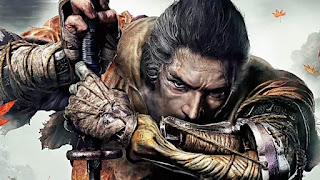| Developer: | LucasArts | | | Release Date: | 2000 | | | Systems: | Windows, Mac, PlayStation 2 |
Super Adventures is going on another break (sorry about that), but first I'm going to finally fix a gaping hole in my site. I wrote about Curse of Monkey Island in 2013, two years later I followed it up with Secret and Tales, and then two years after that I played LeChuck's Revenge. Not the recommended order I know, but if I always did what people recommended I wouldn't be playing Escape from Monkey Island at all. It's been another two years since I played a Monkey Island game though, so I have to play Escape now to continue the pattern!
This is the fourth of the games and for the better part of a decade it seemed like it was going to be the last of them. It wasn't though, which is fortunate because it would've been a bit of a depressing note to leave the series on. Not that Escape from Monkey Island is outright hated by fans, in fact it got good reviews, but it's often considered to be the weakest of them.
It's not the only classic adventure game sequel to suffer after the switch to 3D though, as there's also Broken Sword: The Sleeping Dragon, Simon the Sorcerer 3D... actually it'd be quicker to name the ones that pulled it off. Uh, Sam and Max: Save the World maybe? The transition from being the prettiest 2D games to the ugliest 3D games with the worst controls didn't go well for them, but the game design seemed to go downhill in general. Even the reasonably well liked Gabriel Knight 3 gave the world the cat hair moustache puzzle that killed adventure games forever. Or maybe they died off because increasing budgets due to 3D visuals and voice acting made them increasingly unprofitable. Could be a bit of both.
Speaking of things disappearing forever but then actually coming back a while later, Super Adventures is taking the next two months off, so I've given you a few more screenshots than usual to keep you going. If you ration them out, one screenshot a day, it should get you most of the way through. But if you find yourself thinking 'When is this damn post going to end???', then don't worry, I'll shut up just as soon as I've achieved something on the second island.
This will of course mean there'll be SPOILERS for the events up to that point. Oh, and for the earlier games as well.
Read on »









